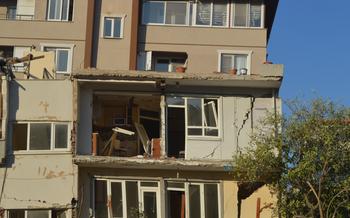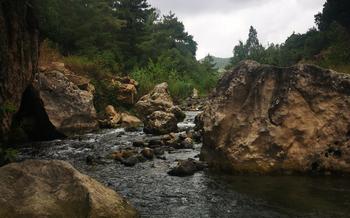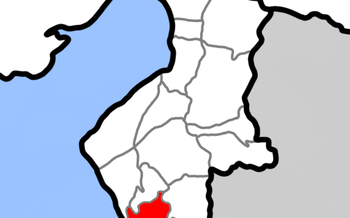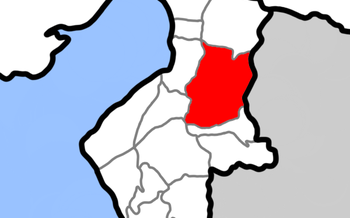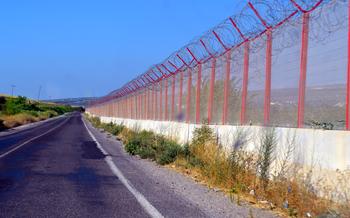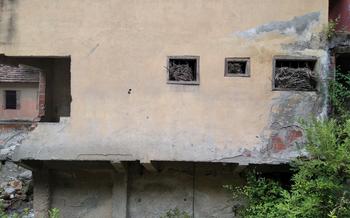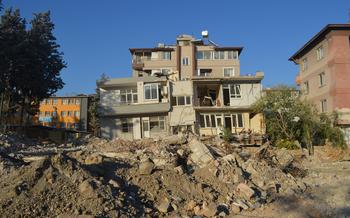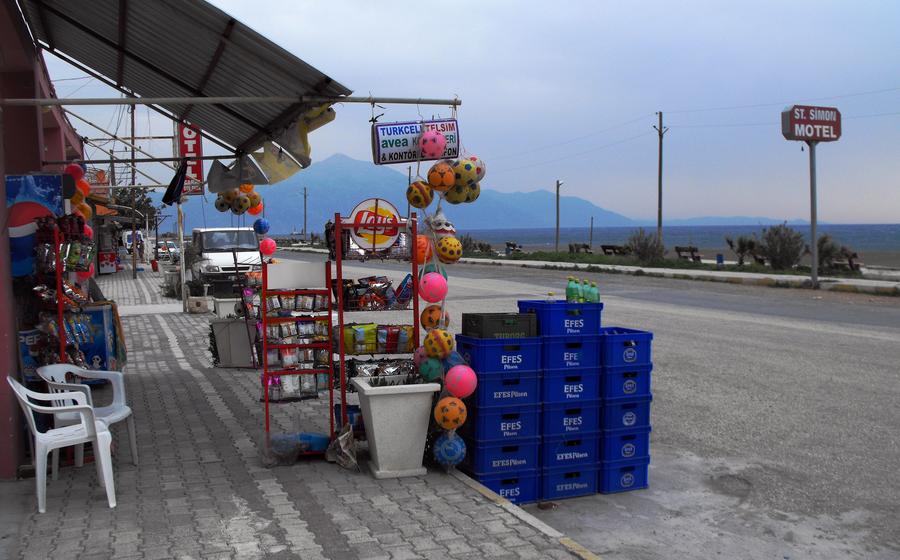
Lokman Hekim Tomb
- Lokman Hekim Tomb: Unveiling the Legacy of a Legendary Physician
- Locating the Tomb: A Journey to the Heart of History
- Unveiling the Architecture: A Fusion of Cultures
- The Healing Touch: Legends and Beliefs Surrounding Lokman Hekim
- A Place of Reverence: Pilgrimage and Rituals at the Tomb
- Exploring the Surroundings: Unveiling Hatay's Hidden Gems
- Unveiling the Lokman Hekim Museum: A Treasure Trove of Knowledge
- Lokman Hekim's Legacy in Modern Medicine: A Bridge to the Past
- Honoring Lokman Hekim: Festivals and Celebrations
- Respecting Local Customs and Traditions: A Guide for Visitors
- Capturing the Essence: Photography and Videography Guidelines
- Preserving the Legacy: Conservation and Restoration Efforts
- Accessibility for All: Ensuring Inclusivity at the Tomb
- Beyond the Tomb: Exploring Lokman Hekim's Influence in Hatay
- Insider Tip: Unveiling a Hidden Gem
Lokman Hekim Tomb: Unveiling the Legacy of a Legendary Physician
Lokman Hekim, a revered figure in Hatay, is believed to have possessed exceptional healing abilities and profound knowledge of medicine. His tomb, a testament to his legacy, stands as a symbol of his contributions to the field of medicine and his enduring impact on the region.
Historical Significance: Lokman Hekim, often referred to as the "Father of Medicine," is a legendary figure whose existence predates written history. He is revered in various cultures and traditions, including Islamic, Jewish, and Christian, for his extraordinary medical skills and wisdom.
Architectural Features: The tomb of Lokman Hekim in Hatay is a remarkable blend of Islamic and Byzantine architectural styles, reflecting the region's rich cultural heritage. The structure's intricate carvings, calligraphy, and domed roof showcase the artistic prowess of the era.
Reverence in Hatay: In Hatay, Lokman Hekim is deeply revered as a symbol of healing and well-being. His tomb has become a pilgrimage site, attracting visitors from near and far who seek blessings, pray for healing, and pay homage to his legacy.
Pilgrimage Site Symbolism: The tomb of Lokman Hekim holds immense spiritual significance as a pilgrimage site. Pilgrims from various faiths visit the tomb to offer prayers, leave offerings, and seek divine intervention for their ailments, believing in the healing powers associated with the site.
Locating the Tomb: A Journey to the Heart of History
Nestled in the heart of Hatay, the Lokman Hekim Tomb stands as a beacon of history and reverence. Situated in the picturesque town of Dörtyol, the tomb is easily accessible, inviting visitors to embark on a journey to the past.
Geographical Position in Hatay
The tomb occupies a prominent position in Hatay, a province renowned for its rich cultural heritage and historical significance. Located in the Dörtyol district, the tomb is strategically situated near other notable landmarks, making it an ideal starting point for exploring the region's rich tapestry of history.
Proximity to Other Historical Landmarks
The Lokman Hekim Tomb is surrounded by a constellation of historical sites, each narrating a unique chapter in Hatay's storied past. The ancient city of Antioch, with its impressive Roman ruins, lies just a short distance away, while the medieval fortress of Bagras stands as a testament to the region's turbulent history.
Transportation Options for Reaching the Tomb
Reaching the Lokman Hekim Tomb is a breeze, with multiple transportation options available. Regular buses and taxis connect Dörtyol to the surrounding cities, making it easy for visitors to plan their pilgrimage. For those seeking a more immersive experience, renting a car and exploring the region at their own pace is a delightful option.
Accessibility for Visitors with Disabilities
The Lokman Hekim Tomb welcomes visitors from all walks of life, including those with disabilities. Accessible ramps and wheelchair-friendly pathways ensure that everyone can conveniently navigate the site and pay homage to the legendary physician.
Unveiling the Architecture: A Fusion of Cultures
The Lokman Hekim Tomb stands as a testament to the fusion of Islamic and Byzantine architectural styles prevalent in the region. Its unique design captivates visitors with its intricate carvings, elegant calligraphy, and a majestic dome that symbolizes celestial harmony.
The tomb's exterior showcases exquisite Islamic geometric patterns, while the interior is adorned with Byzantine-inspired mosaics and frescoes depicting scenes from Lokman Hekim's life and teachings. The tomb's dome, a symbol of divine unity, is a striking feature that adds to its architectural grandeur.
Despite the passage of time, the tomb has undergone meticulous preservation efforts to maintain its historical integrity. The original materials and techniques used in its construction have been painstakingly restored, ensuring that this architectural masterpiece continues to stand as a symbol of Lokman Hekim's legacy and the rich cultural heritage of Hatay.
The Healing Touch: Legends and Beliefs Surrounding Lokman Hekim
Lokman Hekim's reputation as a physician and sage has transcended time, leaving an indelible mark on the hearts and minds of people in Hatay and beyond. Legends and beliefs surrounding his miraculous healing powers have been passed down through generations, solidifying his status as a symbol of health and well-being.
Stories abound of Lokman Hekim's ability to cure the sick and heal the wounded with his profound knowledge of medicinal herbs and plants. His reputation as a master healer attracted people from far and wide, seeking his guidance and remedies for their ailments. It is believed that his healing touch extended not only to physical ailments but also to spiritual and emotional distress, offering solace and comfort to those in need.
The veneration of Lokman Hekim as a symbol of health and well-being is deeply ingrained in the local culture. His name is often invoked in prayers and blessings, and his image is displayed in homes and businesses as a reminder of his healing powers. Offerings and votives left at his tomb serve as a testament to the faith and gratitude of those who seek his intercession and blessings.
These legends and beliefs surrounding Lokman Hekim have transformed the tomb into a place of reverence and pilgrimage, where people from all walks of life come to pay homage to the legendary physician. The tomb has become a symbol of hope, healing, and spiritual connection, attracting visitors who seek guidance, solace, and the healing touch of Lokman Hekim.
A Place of Reverence: Pilgrimage and Rituals at the Tomb
The Lokman Hekim Tomb holds immense significance as a pilgrimage destination, attracting visitors from near and far. Pilgrims from various backgrounds flock to the tomb to pay their respects and seek blessings. They engage in various rituals and prayers, demonstrating their deep reverence for Lokman Hekim.
Prayers and Offerings:
Pilgrims engage in fervent prayers, seeking guidance, healing, and protection from Lokman Hekim. They often recite verses from the Quran and offer supplications, expressing their devotion and gratitude.
Offerings and Votives:
As a symbol of their faith and devotion, pilgrims leave offerings and votives at the tomb. These offerings may include flowers, candles, coins, or personal items that hold special meaning to the individuals.
Seeking Healing:
Many pilgrims visit the tomb seeking healing for various ailments. They believe that Lokman Hekim's blessings and intercession can bring about miraculous cures. Some visitors even claim to have experienced physical and spiritual healing after visiting the tomb.
Sense of Spirituality:
The Lokman Hekim Tomb exudes a palpable sense of spirituality and devotion. Pilgrims often experience a profound connection with Lokman Hekim and a renewed sense of faith. The atmosphere at the tomb is serene and conducive to contemplation and reflection.
Cultural Significance:
The pilgrimage to the Lokman Hekim Tomb holds cultural significance for the people of Hatay. It is a tradition passed down through generations, reflecting their deep respect for Lokman Hekim and his teachings. The tomb serves as a symbol of unity and a reminder of their shared cultural heritage.
Exploring the Surroundings: Unveiling Hatay's Hidden Gems
The Lokman Hekim Tomb is not just a pilgrimage site; it's a gateway to exploring the rich cultural and historical tapestry of Hatay. In the vicinity of the tomb, visitors can discover a treasure trove of hidden gems that showcase the region's diverse heritage.
Historical Sites:
A short walk from the tomb lies the ancient city of Harbiye, boasting well-preserved ruins and remnants of its glorious past. Explore the remains of Byzantine churches, Roman baths, and fortifications that tell tales of civilizations that once thrived in this region.
Natural Wonders:
Hatay is blessed with breathtaking natural landscapes that offer a respite from the historical exploration. Discover the stunning waterfalls of Karasu, where the cascading waters create a mesmerizing symphony. Embark on a scenic hike through the lush forests of Amanos Mountains, home to diverse flora and fauna.
Local Cuisine:
Indulge in the culinary delights of Hatay, renowned for its rich and flavorful cuisine. Savor the aromatic dishes infused with fresh herbs, spices, and local produce. Sample the famous künefe, a delectable pastry filled with melted cheese and topped with crispy shredded dough, a local specialty that tantalizes taste buds.
Cultural Immersion:
Immerse yourself in the vibrant culture of Hatay by interacting with the friendly locals. Visit the traditional bazaars, where you can haggle for unique souvenirs and handicrafts while experiencing the bustling atmosphere. Join in on cultural events, such as traditional dance performances or music concerts, that showcase the region's rich heritage.
Unveiling the Lokman Hekim Museum: A Treasure Trove of Knowledge
Nestled in the heart of Hatay, the Lokman Hekim Museum stands as a testament to the life and work of this legendary physician. Within its walls lies a treasure trove of artifacts and exhibits that transport visitors back to a time when Lokman Hekim's wisdom and healing touch were revered throughout the region.
Manuscripts, medical instruments, and herbal remedies are meticulously displayed, offering a glimpse into the practices and knowledge that shaped Lokman Hekim's legacy. Visitors can marvel at ancient scrolls inscribed with his teachings, explore the tools he used to diagnose and treat ailments, and discover the medicinal properties of plants that he mastered.
Interactive displays and educational programs bring Lokman Hekim's work to life, making the museum an engaging and informative experience for visitors of all ages. Through virtual reality simulations, visitors can step into the shoes of Lokman Hekim, experiencing firsthand the challenges and triumphs of his medical practice.
The Lokman Hekim Museum is not merely a repository of artifacts; it is a living tribute to the enduring impact of this remarkable figure. It serves as a reminder of the power of knowledge, the importance of compassion, and the profound influence that one person can have on the course of history.
Lokman Hekim's Legacy in Modern Medicine: A Bridge to the Past
Lokman Hekim's influence extends far beyond the boundaries of ancient times. His teachings and practices have left an enduring mark on contemporary medicine, serving as a bridge between the past and the present. Medical institutions worldwide recognize his contributions, acknowledging him as a pioneer in the field. His work continues to inspire ongoing research and studies, with scholars delving into his vast knowledge of herbal medicine and healing techniques. Through medical conferences and symposiums, his legacy is kept alive, fostering a dialogue between traditional and modern medical approaches. Lokman Hekim's teachings serve as a reminder of the interconnectedness of medical knowledge throughout history, highlighting the enduring value of ancient wisdom in shaping modern healthcare practices.
Honoring Lokman Hekim: Festivals and Celebrations
The legacy of Lokman Hekim is celebrated in Hatay through vibrant festivals and events that showcase his life, achievements, and enduring impact on the region's culture and history. Every year, the Lokman Hekim Festival takes center stage, attracting visitors from near and far to honor this revered figure.
The festival is a kaleidoscope of cultural performances, music, and dance, each element paying homage to Lokman Hekim's contributions to medicine and spirituality. Traditional healers and herbalists gather to demonstrate their skills, sharing their knowledge of ancient remedies and practices that have been passed down through generations.
These festivals serve as a bridge between the past and present, honoring Lokman Hekim's legacy while fostering a sense of community and cultural pride. Participants come together to celebrate his life and teachings, strengthening the bonds that unite the people of Hatay.
Respecting Local Customs and Traditions: A Guide for Visitors
When visiting the Lokman Hekim Tomb, it is crucial to be mindful of local customs and traditions to ensure a respectful and enriching experience. Dressing modestly and appropriately is essential, respecting the conservative culture of the region. Revealing clothing or shorts should be avoided, and visitors should opt for long skirts, pants, and shirts that cover the shoulders.
Etiquette and behavior at the tomb should reflect reverence for the site's religious and cultural significance. Visitors should maintain a respectful demeanor, avoiding loud noises, disrespectful language, or disruptive actions. Photography and videography should be conducted with discretion, and obtaining permission before capturing images of individuals is always advisable.
Interacting with locals requires sensitivity and respect. Visitors should approach interactions with a friendly and open attitude, seeking guidance or information when needed. Demonstrating respect for the cultural and religious significance of the tomb will foster a positive and welcoming atmosphere for all visitors.
Capturing the Essence: Photography and Videography Guidelines
The Lokman Hekim Tomb is a sacred site that attracts pilgrims and visitors from around the world. When capturing the essence of this historical landmark through photography or videography, it is important to be respectful of the cultural and religious significance of the tomb.
Respectful Photography and Videography:
- Prioritize Respect: Always seek permission before capturing images of individuals, particularly those engaged in prayer or contemplation.
- Avoid Disruption: Refrain from using flash photography or engaging in disruptive behavior that may disturb the serene atmosphere of the tomb.
- Embrace Natural Light: Utilize natural light to enhance the authenticity and beauty of your shots. Artificial lighting may alter the ambiance of the tomb.
Showcasing the Tomb's Grandeur:
- Capture Architectural Details: Focus on the intricate carvings, calligraphy, and structural elements that make the tomb unique.
- Convey the Spiritual Essence: Strive to capture the sense of spirituality and devotion that permeates the tomb.
- Storytelling Through Images: Use your camera to narrate the story of Lokman Hekim and his enduring legacy.
By following these guidelines, you can create meaningful and respectful representations of the Lokman Hekim Tomb, preserving its essence for generations to come.
Preserving the Legacy: Conservation and Restoration Efforts
The Lokman Hekim Tomb, a testament to the enduring legacy of the legendary physician, stands as a symbol of cultural heritage and historical significance. To ensure its preservation for future generations, ongoing conservation and restoration efforts are meticulously undertaken. Government agencies and cultural organizations collaborate tirelessly to safeguard the tomb from the ravages of time and environmental factors.
Advanced technology plays a crucial role in documenting and preserving the intricate details of the tomb. Three-dimensional scanning and digital photography capture every nuance of the architecture, creating a comprehensive record for future reference and restoration projects. These cutting-edge techniques provide invaluable insights into the tomb's construction, allowing experts to identify areas in need of repair or reinforcement.
Through meticulous restoration efforts, the original grandeur of the tomb is carefully restored. Skilled artisans, guided by historical research and traditional craftsmanship, work diligently to maintain the tomb's architectural integrity. Time-worn elements are delicately repaired or replaced, ensuring that the tomb continues to stand as a symbol of Lokman Hekim's enduring legacy.
By preserving the Lokman Hekim Tomb, we honor the memory of a revered figure and safeguard a priceless piece of cultural heritage. These efforts ensure that future generations can continue to marvel at its beauty, learn from its history, and draw inspiration from the life and teachings of Lokman Hekim.
Accessibility for All: Ensuring Inclusivity at the Tomb
The Lokman Hekim Tomb is committed to providing an accessible and inclusive environment for all visitors, regardless of their abilities or disabilities. To ensure a seamless and enjoyable experience, the tomb features a range of accessibility measures:
-
Ramps and Wheelchair Access: The tomb is equipped with ramps and wheelchair-accessible pathways, allowing visitors with mobility impairments to navigate the site with ease.
-
Guided Tours with Sign Language Interpretation: For visitors who are deaf or hard of hearing, guided tours with sign language interpretation are available upon request. Advance booking is recommended to ensure the availability of an interpreter.
-
Braille Signage and Tactile Maps: Braille signage and tactile maps are provided throughout the tomb to assist visually impaired visitors in navigating the premises. These tactile aids offer a comprehensive understanding of the tomb's layout and exhibits.
-
Inclusive Environment: The tomb's staff is trained to be welcoming and supportive of visitors with disabilities. They are always ready to provide assistance, guidance, and any additional accommodations that may be required. The tomb strives to create an inclusive environment where everyone feels respected, valued, and able to fully engage with the site's history and significance.
Beyond the Tomb: Exploring Lokman Hekim's Influence in Hatay
Lokman Hekim's influence extends far beyond the confines of his tomb. As you delve deeper into the history and culture of Hatay, you'll discover a tapestry of landmarks, traditions, and stories woven around his legacy. Explore the Lokman Hekim Mosque, a hidden gem nestled in the heart of Hatay, and marvel at its unique architectural features and historical significance. Immerse yourself in the serene atmosphere and spiritual essence of this sacred space, gaining a deeper understanding of Lokman Hekim's multifaceted legacy.
Uncover local legends and stories that have been passed down through generations, each one shedding light on Lokman Hekim's profound impact on the region. Discover the traditional herbal remedies still used in Hatay, many of which trace their origins back to his teachings and practices. By immersing yourself in the rich cultural heritage shaped by Lokman Hekim, you'll gain a newfound appreciation for his enduring influence on Hatay and beyond.
Insider Tip: Unveiling a Hidden Gem
While exploring Hatay, don't miss the opportunity to discover the hidden gem of the Lokman Hekim Mosque. This lesser-known gem holds a significant place in the history and culture of Hatay. Explore its unique architectural features, which blend Islamic and Byzantine elements, creating a visually stunning masterpiece. Step inside to experience the serene atmosphere and spiritual essence that permeate the mosque. Learn about Lokman Hekim's multifaceted legacy, not only as a physician but also as a spiritual guide and philosopher. Unraveling the stories and legends associated with this mosque will provide a deeper understanding of his profound impact on the region. Embrace the opportunity to connect with the local community and gain insights into their reverence for Lokman Hekim. Discovering the Lokman Hekim Mosque is an enriching experience that offers a unique perspective on his enduring legacy in Hatay.
